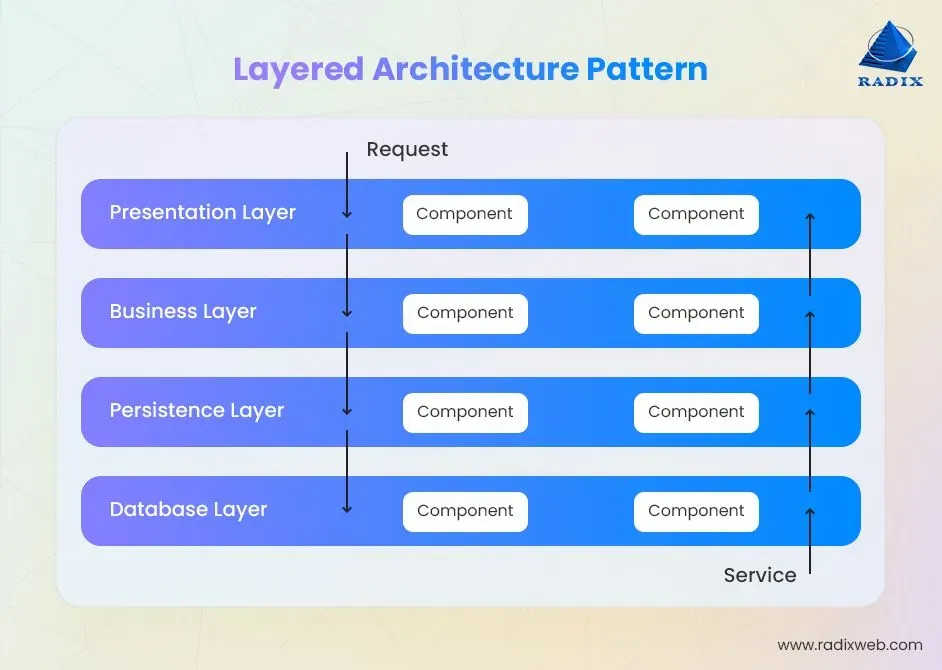Software Architecture Patterns form the high-level templates that guide how to structure a software system to meet quality attributes such as scalability, maintainability, resilience, security, and operability, providing a shared framework for teams across diverse domains to reason about trade-offs, costs, and long-term implications of architectural decisions. They offer reusable blueprints for organizing components and their interactions, helping stakeholders avoid reinventing the wheel for every project and enabling consistent decisions about boundaries, interfaces, data flow, governance, and the evolution of the system over time. By studying these patterns, engineers can reason about system behavior, deployment strategies, and evolution over time—from monoliths to distributed microservices—without losing sight of non-functional goals. The guide explains how to select and apply patterns in real-world projects, balancing trade-offs in performance, reliability, maintainability, operability, and team readiness while respecting existing constraints and organizational realities. Whether you are building a monolith, a distributed system, or a cloud-native platform, understanding these patterns—such as the layered architecture pattern—will improve planning, design, and implementation.
Viewed through a different lens, these broad system-design templates emphasize architectural styles and the macro-structure of a software environment rather than isolated coding patterns. They act as system blueprint templates that guide decisions about module boundaries, service decomposition, data ownership, and deployment models across teams and platforms. Rather than focusing on how individual objects communicate, teams reason about how major subsystems collaborate, how events propagate, and how governance and observability are built in from the start. In practice, you might compare a layered, service-oriented, or event-driven approach and select the one that best supports your business goals, risk posture, and organizational structure. Ultimately, the goal is to provide a durable blueprint that guides evolution, ensuring performance, reliability, and maintainability as requirements shift and technology changes.
Software Architecture Patterns: A Practical Guide for Scalable and Maintainable Systems
Software Architecture Patterns are high-level templates that guide how to organize a software system to meet quality attributes such as scalability, maintainability, and resilience. They provide reusable blueprints for structuring components and their interactions, helping designers and developers reason about system behavior, deployment, and evolution. For architecture patterns for developers, understanding these patterns helps teams avoid reinventing the wheel and makes it easier to plan for cloud-native or distributed environments. Real-world examples, such as the layered architecture pattern, microservices patterns, and event-driven patterns, illustrate how different concerns—boundaries, data ownership, and asynchronous processing—are addressed.
Choosing and applying Software Architecture Patterns requires aligning business goals with non-functional requirements like performance, reliability, and observability. Start by defining priorities and mapping them to candidate patterns, then weigh trade-offs: the layered architecture pattern provides clear separation of concerns but may introduce extra hops; microservices patterns offer autonomy and scalability while increasing deployment complexity; and the event-driven patterns enable real-time responsiveness but demand careful event design and strong monitoring. Keeping these considerations in mind helps teams build architectures that are easier to evolve, test, and maintain.
Design Patterns vs Architecture Patterns in Practice: From Layered Architecture to Event-Driven Solutions
Design patterns vs architecture patterns: design patterns focus on solving problems within a single component or class (for example, Singleton, Factory, or Observer), while architecture patterns address the overall structure of the system and the interactions among major subsystems. Understanding this distinction helps teams choose the right level of abstraction and prevents over- or under-engineering. A common illustration is using a Repository pattern—an established design pattern—inside a Layered Architecture Pattern, which is an architecture pattern. This combination shows how design-level solutions can live inside a broader architectural template. In practice, design patterns vs architecture patterns delineate levels of decision-making and help teams communicate about system structure.
Practical guidance on applying patterns continues: start with a minimal viable architecture, define architectural goals, and iterate. Consider how layered architecture pattern, microservices patterns, and event-driven patterns fit your team’s skills and deployment model, whether you are maintaining a monolith or building a cloud-native platform. Document architectural decisions to capture why a pattern was chosen and how to evolve as requirements shift, ensuring governance and observability across services.
Frequently Asked Questions
What are Software Architecture Patterns, and how should I choose between the layered architecture pattern and microservices patterns for a project?
Software Architecture Patterns are high-level templates for organizing a system’s major components and their interactions, aimed at quality attributes like scalability and maintainability. They differ from design patterns by shaping the overall structure rather than solving problems inside a single component. When deciding between the layered architecture pattern and microservices patterns, consider constraints such as deployment model, team alignment, data ownership, and required scalability: layered architecture offers clear boundaries and easier testing for traditional, monolithic or enterprise apps, while microservices patterns enable independent deployment and autonomous teams for large, evolving systems. Often teams evolve from a layered approach to microservices as needs grow, balancing complexity, governance, and observability.
How do event-driven patterns fit into Software Architecture Patterns, and how do they compare with the layered architecture pattern in terms of scalability and maintainability?
Event-driven patterns use asynchronous events to trigger processing, promoting loose coupling and high throughput—good for real-time analytics and responsive systems. They contrast with the layered architecture pattern, which emphasizes structured layers and clear data flow, potentially adding latency with multiple hops. Trade-offs include eventual consistency and debugging complexity in event-driven designs versus the clearer boundaries of layered patterns. Use a pragmatic approach: map business requirements to patterns, prototype critical paths, and ensure strong observability and contracts to manage data flow and failures.
| Topic | Key Points |
|---|---|
| What are Software Architecture Patterns? | Broad, reusable solutions at the system level that guide how to organize a software system to meet quality attributes (e.g., performance, reliability, scalability, maintainability). They describe overall structure, partitioning, component communication, and data flow; differ from design patterns by addressing the architecture as a whole rather than individual objects. |
| Layered Architecture Pattern | Separates concerns into layers (e.g., presentation, business logic, data access) with typically one-way communication. Pros: strong separation of concerns, easier testing, clear boundaries. Cons: potential performance overhead from multiple hops, risk of rigidity if layers become monolithic. Often effective for enterprise apps with UI/services/storage and enables incremental complexity. |
| Microservices Pattern | Decomposes a system into small, independently deployable services that own their data and logic. Pros: high scalability, resilience, autonomous teams. Cons: deployment complexity, data consistency challenges, need for robust integration and monitoring. |
| Event-Driven Pattern | Uses asynchronous events to trigger processing across components/services. Pros: loose coupling, better fault isolation, scalable event processing. Cons: eventual consistency, debugging complexity, managing state across services. |
| Client-Server and Pipe-and-Filter Patterns | Client-Server: centralized resource requests from clients to servers; can enable centralized security and governance but risks a single point of failure or bottlenecks if not scaled. Pipe-and-Filter: data processing as a sequence of pipes (transforms) and filters (processing steps); pros: composability and reuse; cons: potential latency and need for well-defined data contracts. |
| Design Patterns vs Architecture Patterns | Design patterns solve problems inside a single component or class (e.g., Singleton, Factory, Observer). Architecture patterns shape the overall system structure and major subsystems. Distinguishing them helps choose the right level of abstraction; using a design pattern inside an architecture is common practice. |
| Choosing the Right Pattern for Your Project | Evaluate based on functional goals and non-functional requirements plus team capabilities. Criteria: scalability/load, deployment/governance, data consistency, observability/maintenance, technology/skills, regulatory/security needs. |
| Applying Software Architecture Patterns in Practice | Clarify core business requirements and quality attributes; map to candidate patterns and their trade-offs. Steps: define architectural goals, start with a minimal viable architecture, prototype critical paths, plan for data flow and contracts, invest in non-functional testing, iterate as requirements evolve. |
| Industry Insights and Practical Tips | Layered architecture suits traditional enterprise apps; Microservices suit autonomous teams but add deployment complexity; Event-driven works well for real-time workloads with proper monitoring; always distinguish architecture from design patterns; document architectural decisions to capture rationale and evolution. |
Summary
Table of key points about Software Architecture Patterns and their trade-offs, followed by a descriptive conclusion.



